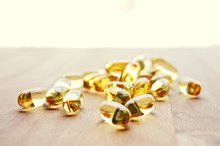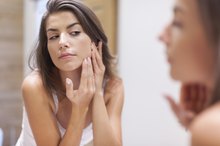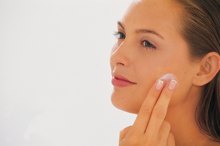How to Clean Pitted Dirt From Enlarged Pores
Pitted dirt in enlarged pores are also known as blackheads. Blackheads are caused when dead skin cells, sebum (oil) and bacteria build up in the pores of the skin. When the blockage is exposed to air it hardens and changes color to black or brown. The blockage stretches the pore, causing it to become larger and more noticeable. Cleaning the dirt from enlarged pores will reduce the pore size and inflammation. There are many ways to do this, in turn gaining clearer, healthier skin.
Cleanse your skin daily with a gentle cleanser containing salicylic acid. Salicylic acid loosens dirt and bacteria, forcing it to the surface of the pore and reducing inflammation. Rinse the skin with cool or lukewarm water since warmer water promotes drying of the skin. The coolness of the water will further shrink large pores as well.
How to Hide Large Pores
Learn More
Moisturize the skin using a vitamin E enriched moisturizer or toner. Toners are ideal because they balance out the skin's pH, adding moisture where needed and limiting oil production in problem areas. Vitamin E helps the skin to heal and adds elasticity to the skin, making pores appear smaller.
Exfoliate the skin every day or every other day. Exfoliation will remove pitted dirt and dead skin cells by sloughing off the exposed particles top layers of the blockage. This will also ease pores back to normal size.
How to Clear Up Ingrown Hairs
Learn More
Use a comedone extractor to release the pitted dirt. A comedone extractor utilizes a small amount of pressure and suction to remove blackheads without squeezing or risk of further infection. To use, steam the skin or place a warm cloth on the skin to open pores. Using the proper loop, place the extractor over the clogged pore and apply a slight pressure downward. This will push out the pitted dirt.
Tips
Microdermabrasion and laser treatments are available through skin care clinics for blackhead removal and shrinking of pores when home remedies are not effective.
Warnings
Never use your fingernails to remove a blackhead. This will cause dirt to be pushed deeper into the pore and increase infection risk.
Related Articles
References
- Wang S. Understudied skin characteristics awaiting genetic breakthroughs. J Investig Dermatol Symp Proc. 2018;19(2):S101-S102. doi:10.1016/j.jisp.2018.10.005
- American Academy of Dermatology Association. What can treat large pores?
- Draelos ZD. Cosmeceuticals for male skin. Dermatologic Clinics. 2018;36(1):17-20
- Milam EC, Rieder EA. An approach to cosmeceuticals. Journal of Drugs in Dermatology. 2016;15(4):452-6.
- Sakuma TH, Maibach HI. Oily skin: an overview. Skin Pharmacology and Physiology. 2012;25(5):227-35.
- Yeh L, Bonati LM, Silverberg NB. Topical retinoids for acne. Seminars in Cutaneous Medicine and Surgery. 2016;35(2):50-6.
- Zaenglein AL, Pathy AL, Schlosser BJ, et al. Guidelines of care for the management of acne vulgaris. Journal of the American Academy of Dermatology. 2016;74(5):945-73.
Writer Bio
Sharin Griffin has been a freelance writer since 2009, specializing in health-related articles. She has worked in the health-care industry as a certified nursing assistant and medical technician. Griffin's medical expertise encompasses bariatrics and geriatric care, with an emphasis on general medicine. She is completing an associate degree in health-care administration from Axia University.









